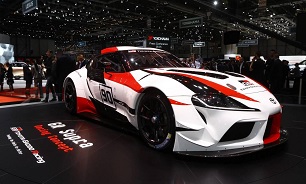Toyota, BMW Overcome Corporate Differences For Partnership
The new Supra won't be a rebadged BMW Z4 - or vice-versa.

Khodrocar - You’d imagine building a car in today’s modern times would be the same across the board regardless of which automaker is doing the building. Design and engineer a vehicle, make sure the numbers check out, and then send off for mass production. However, it’s not that simple. Corporate cultures and philosophies differ from automaker to automaker, and those differences were a hurdle both Toyota and BMW had to overcome when designing the new Toyota Supra and BMW Z4.
"We have quite a lot of differences in the terms of the way we make cars,” Tetsuya Tada-san, chief engineer of the upcoming MkV Supra, told Road and Track. "The philosophies of the companies, as well as the mentality of Japanese people and German people are quite different. In that sense, we had to overcome a lot of differences."
BMW and Toyota announced their collaboration back in 2012. According to Tada-san, it took the automakers about two years to hash out their different engineering and design philosophies. Even then, it took another two years before details started to emerge about what both companies were working on together.
Instead of working from a shared idea, each automaker designed the car they wanted to build and then looked for commonalities and the possibility of sharing parts.
"When we initially approached BMW, we thought it would also be aiming to have as much common parts as possible," Tada-san said. "But they had quite an unexpected reaction initially, saying ‘there’s no point in having as many common parts as possible if we cannot make a car that we each want.’ So, we decided to first have a firm idea of what we, individually, wanted to make, and based on that, we approached each other and compared to see where we could have common parts."
This is good news to hear. The Toyota Supra and BMW Z4 should each be distinct in their driving dynamics. While specifics of the Z4 are still a mystery, the Supra will continue the fun-to-drive philosophy of the 86.
Source: Road and Track
Latest News


